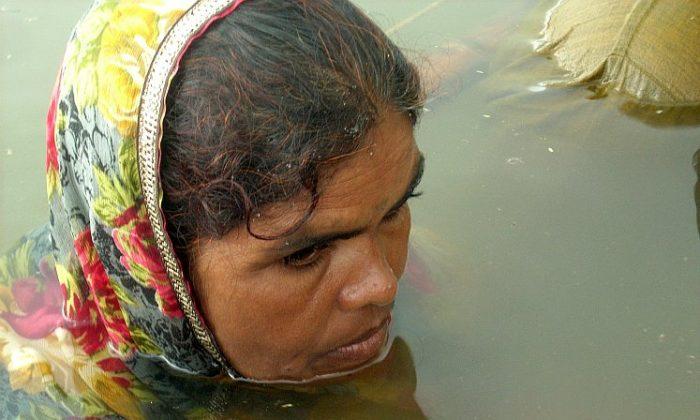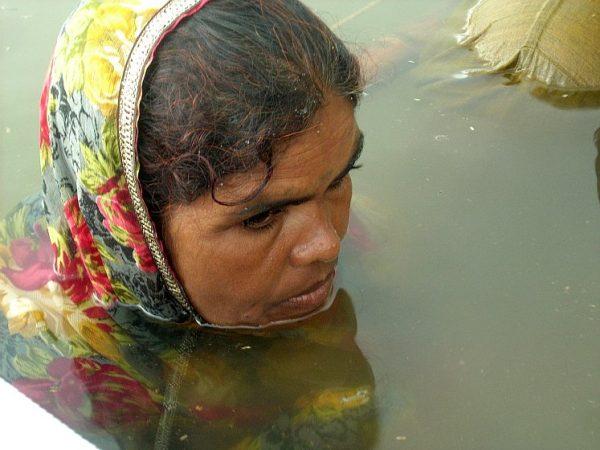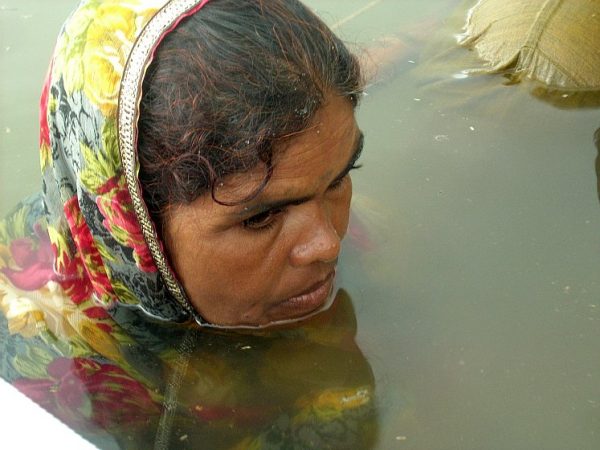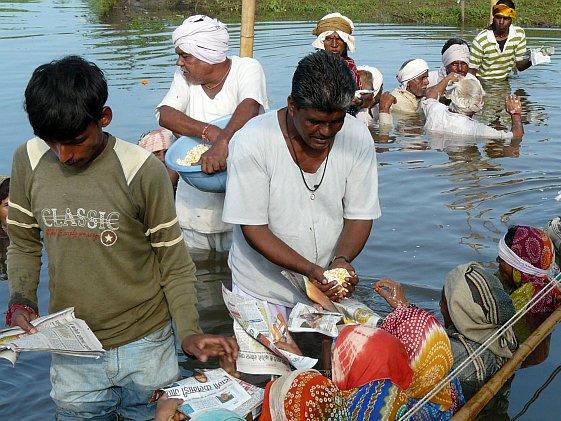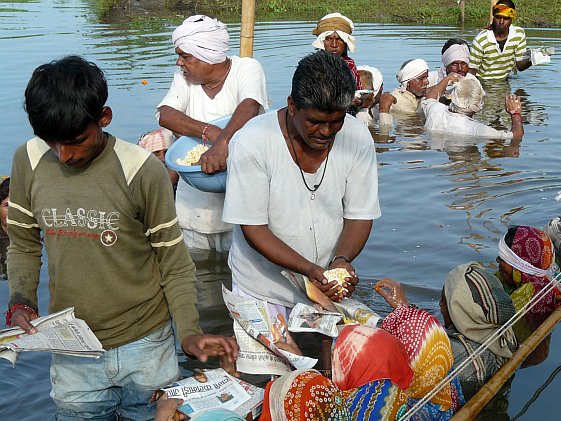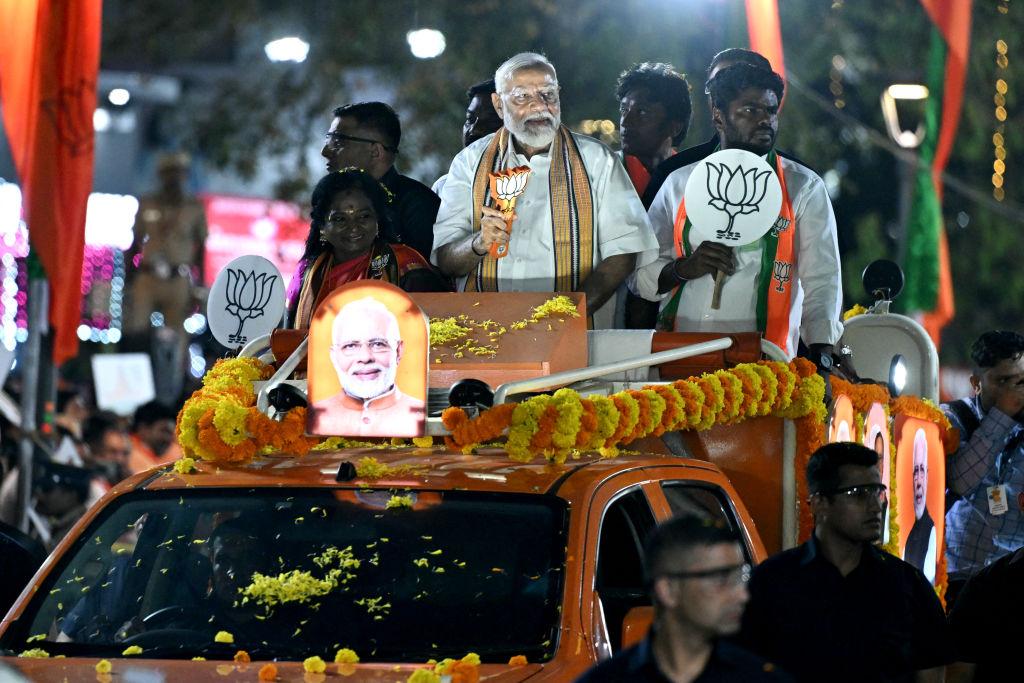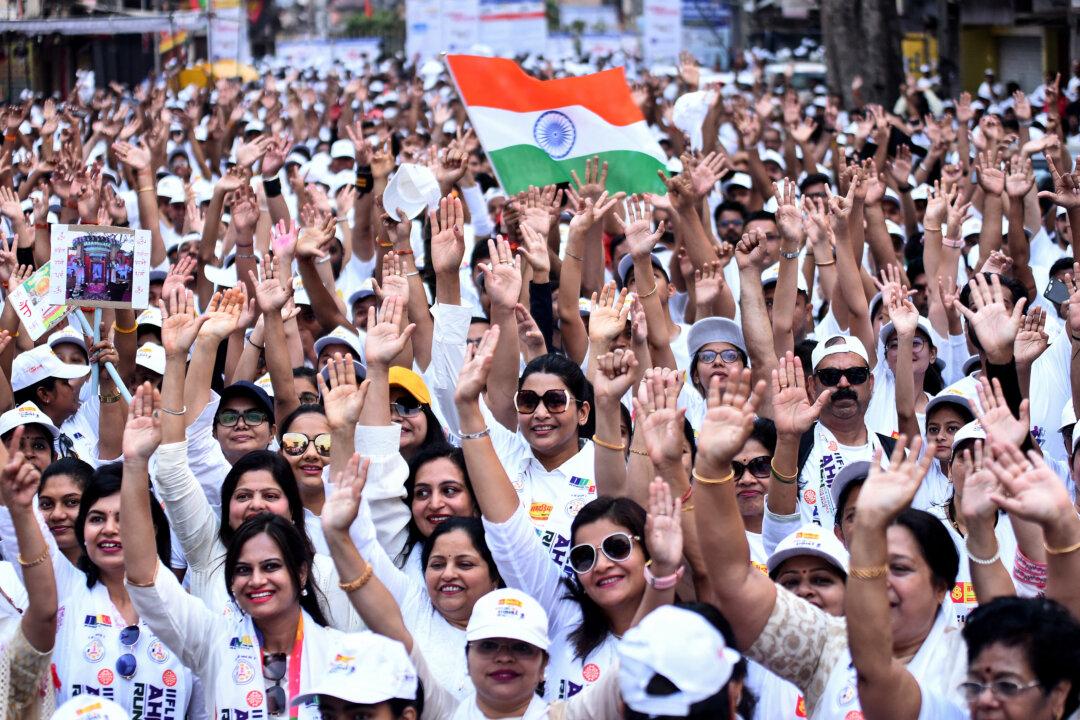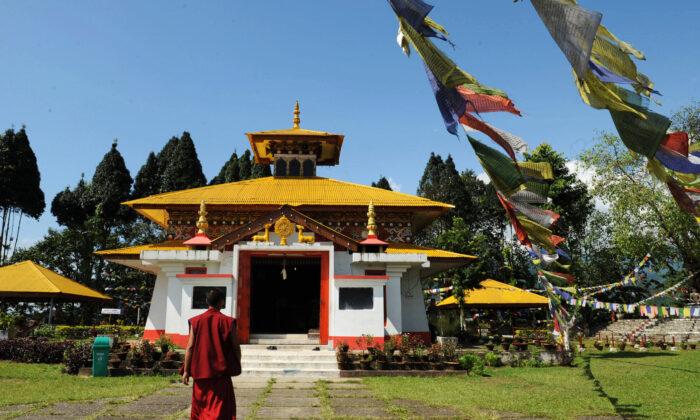After sitting chin deep in water for 17 days, villagers in central India succeeded on Sept. 10 in forcing authorities to reverse the recent increase in dam water threatening to submerge their land.
When villagers in the Khandwa District of Madhya Pradesh State discovered the water rising in the Omkareshwar and Indira Sagar dams, 51 of them literally threw themselves into the water in protest—and vowed to stay there, drowning if necessary, until their demands were heard.
The dams are part of the giant Narmada Dam project, consisting of a staggering 3,200 dams built along the Narmada River.
Since its inception in 1979, the project has been one of the most controversial in history, mostly over the issue of mass displacements without compensation.
The Supreme Court of India already ruled that land cannot be flooded without rehabilitating and compensating those affected first. This hard-fought battle was already won by Narmada Bachao Andolan (NBA), the movement behind the protest.
“It is against the Supreme Court of India’s order, which says that land should be given for the land taken before the completion of the dam. The order also says that rehabilitation policy must be implemented six months prior to the submergence of the acquired land,” said Sneha Chandna, an activist with the NBA.
Nationwide, support had poured in for the protesters as reports indicated that 200 villages were at risk of losing their land as a result of the recent water increase on the Narmada River.
On Sept. 10, the authorities lowered the water of the Omkareshwar Dam to the stipulated 620 feet (189 meters) and agreed to provide land to the farmers. The government has also formed a committee of three ministers to look into the issues raised by the people.
The unusual protest called “Jal Satyagrah”—Jal means water and Satyagrah is a form of nonviolent resistance popularized by Mahatma Gandhi—left many in need of urgent hospitalization.
According to Chandna, many had flesh that was badly rotting, people complained of severe itching, and some protesters had festering wounds that fish started to feed on.
Vishnu, 40, a villager from Kamenkhera, worried about his mother Girija Bai, 55, who along with 30 women spent 17 days in the water.
“My mother’s feet are badly rotting. They have just come out of water. My mother cannot walk and she’s lying in a tent. They are applying some ointment to her skin,” Vishnu said.
According to Vishnu, the recent increase in water level spoiled cotton crops on 700 acres of land and made it extremely difficult for farmers to reach another 1,000 acres of land lying on the other side of the river.
The Epoch Times publishes in 35 countries and in 19 languages. Subscribe to our e-newsletter.
